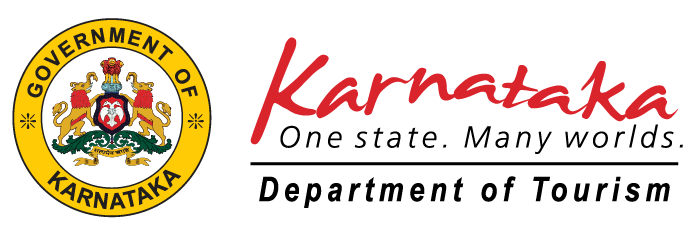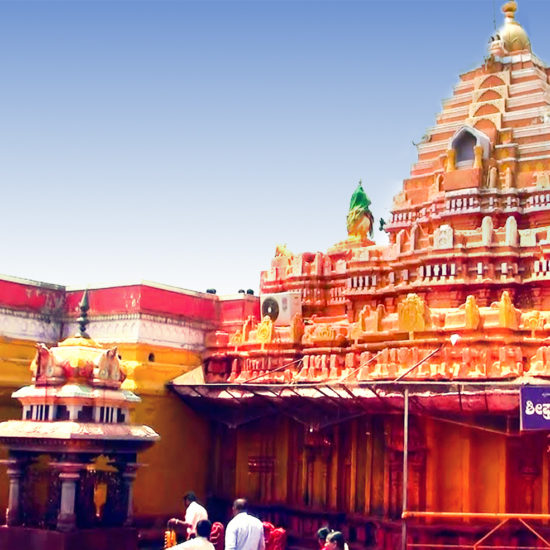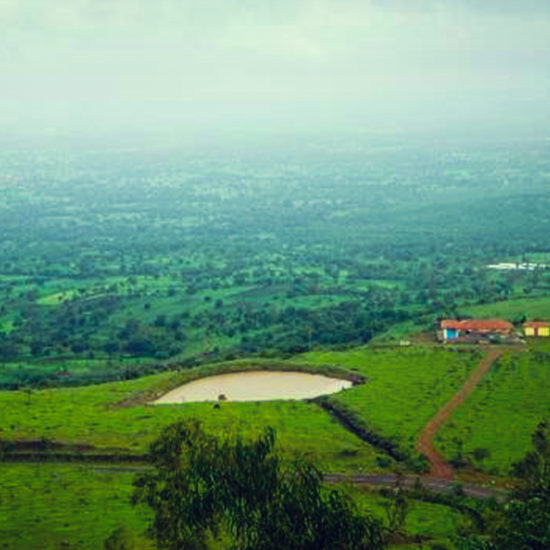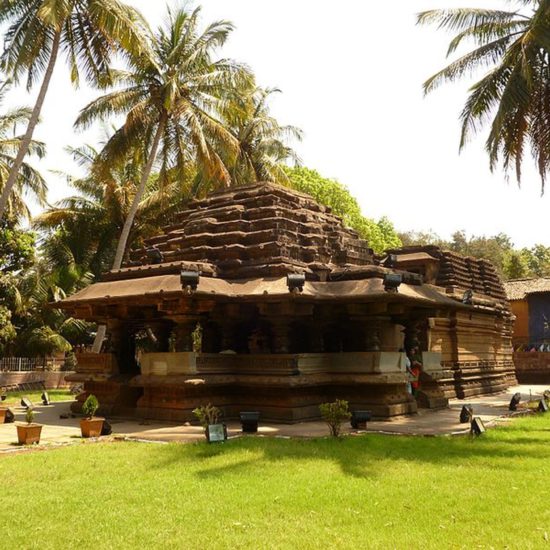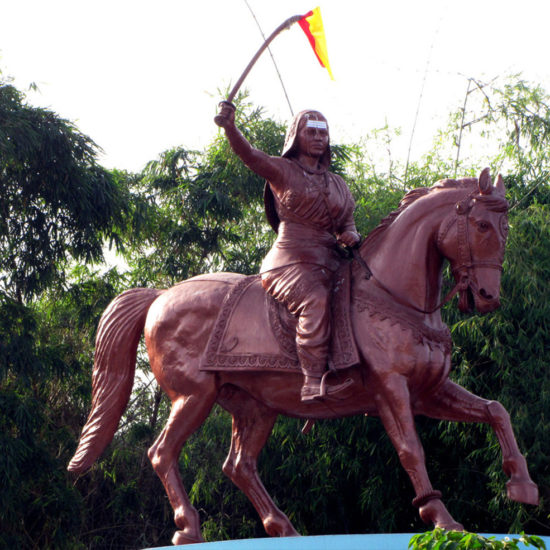Belagavi was originally known as Velugrama or Venugrama as per historical records and it literally meant “bamboo village”. Venu stands for bamboo which is found abundantly in these areas. Belagavi is surrounded by Uttara Kannada and Dharwad in the south, Bagalkote and Gadag in the east, Maharashtra state in the north and Goa state in the west. Belagavi is one of the oldest cities of Karnataka and is the largest in terms of size. It lies in a zone of cultural transition between Karnataka, Maharashtra and Goa with antiquity clearly traceable up to 2nd Century AD. Due to its proximity to the states of Maharashtra and Goa, Belagavi has acquired a distinct cultural flavour of these states and blended it with the local Kannada culture to create a unique heritage. The principal rivers of the district are the Krishna, the Ghataprabha and the Malaprabha.
Belagavi is synonymous with India’s freedom struggle. The most notable personality from Belagavi is the brave Kittur Rani Chennamma, the famed lady warrior who fought against the British to protect her kingdom. Belagavi was chosen as the venue of the 39th session of Indian National Congress (INC) in December 1924 under the Presidency of Mahatma Gandhiji. The session left a landmark in the city called the “Congress well” which was the source of supplying water to the many delegates.
This district has a distinguished presence in different fields like art, literature, spirituality, education, industry and sports. The Visveswaraiah Technological University (VTU) is located here; all technical and engineering colleges in Karnataka State come under this University.
And endowed with a rich religious and historical heritage, Belagavi offers visitors many diverse touristic options like heritage monuments, enchanting hill-ranges and deep rugged rocky valleys covered by evergreen forests. The city is widely known for its delicious Belagavi Kunda and Karadantu which is a must try delicacy. It is also known for its toy-making craft – Gokak toys, which exists even today. Varieties of wood are used to carve out exquisite pieces of art. Toys of items like fruits, vegetables, animals, birds, etc are usually carved which makes for a wonderful souvenir.
For further information, visit the official district website click here!
Check here to Know More About Belagavi
Tourist Attractions
- Congress Well: Belgaum was chosen as the venue of the 39th session of Indian National Congress (INC) in December 1924 under the President ship of Mahatma Gandhiji. Notably, this was the only session of the INC that was presided over by the Gandhiji himself and the only session held in Karnataka. The session left another landmark in the city in the form of the “Congress well" which was source of supplying water to the many delegates who turned up to attend the 1924 session.
- Ghataprabha Bird Sanctuary: Located in Gokak taluk, this sanctuary is in an area about 29 sq km and is enclosed by the Ghataprabha River. This sanctuary has many migratory winged visitors; the more famed ones include the Demoiselle Crane and European White Stork. The ideal time for bird enthusiasts would be November to March as it is the nesting season for many of these birds.
- Gokak Falls: Gokak Falls is 6 km away from Gokak town and gets its name from the Goki trees found in abundance in these areas. It resembles the Niagara Falls due to its features like the fall, shape etc. Here, River Ghataprabha takes a leap of 52 metres over the sand-stone cliff amidst a picturesque gorge of the rugged valley, making a beautiful sight. This place has the credit of generating electricity for the first time in the country in about 1887. A prime attraction of the Gokak Falls is the hanging 200-m-long bridge that lies 14 m above the bedrock. Tourists can also visit monuments on both sides of the rocky gorge which include temples of Goddess Durga, Lord Shanmukha and Lord Mahalingeshwara built in the traditional Chalukyan style of architecture.
- Malaprabha Dam: Malaprabha dam, also known as Navilutheertha dam is Karnataka’s shortest dam (only about 40 meters wide and only four gates) and tourist attraction in Belagavi district. Malaprabha dam provides drinking water to nearby towns such as Belagavi and Dharawada.
- Godachinamalki Falls: Located around 15 km away from Gokak is the beautiful Godachinmalki Falls, also known as Markandeya Falls, as it is located in the Markandeya River. The Falls is actually located in a rugged valley, approachable from Godachinmalki village by walking through an irregular forest route for about 2.5 km. The Markandeya takes a first jump from a height of about 25 metres and flows into a rocky valley and after a short distance from here it takes a second jump from a height of about 18 metres. Later, it joins the Ghataprabha River. June to September is the ideal time to visit this Falls in all its glory.
- Navilutirtha: Navilutirtha located in Saundatti is a low valley situated in between the two hills, is an enchanting place. Long ago, it is told that the place was full of peacocks, frequently flocking the Malaprabha basin. And thus, the place was named Navilutirtha. Presently, the place has a dam built across the Malaprabha which was completed in 1975 creating the Renuka Sagar reservoir.
- Dhupdal: Dhupdal is a popular dam in Belagavi district, close to Gokak falls. Dhupdal is 72 kms from Belagavi city and 8 kms from Gokak Falls.
- Barapede Caves: Natural caves known as breeding area for bats, located near Bhimgad.
- Rakaskop: Rakaskop is around 15 km from Belagavi and it literally means a hamlet of a rakkasa (giant), who is stated to have lived on a hillock near this village. A laterite cave on the hillock resembles a huge seated human figure which is believed to be the rakkasa. Here a dam is built across the Markandeya River which supplies drinking water to Belagavi. The reservoir is visible from this hillock, which be reached by climbing steps behind the reservoir. A panoramic view of the reservoir and a stunning view of surrounding village landscape can be had from this hillock.
- Gokak Toys: In Gokak, local artisans create bright and colorful wooden toys mainly in the form of fruits, vegetables, animals and birds. This craft is believed to be at least 200 years old. Here, the toys are made using a specialised soft variety of wood usually hariwala, polki, and hale wood.
Adventure/Activities
- Sada Falls Trek: Sada waterfall is a mystic, offbeat waterfall deep in the forests of Western Ghats, on the Karnataka-Goa border. A guided trek to Sada Falls is a highly recommended activity in Belagavi district. While road network is available till Sada village, the last few kms till Sada waterfall need to be covered on foot. Trekking distance could vary between 8 to 18 kms depending on starting point and trail used. Sada Falls trek is medium to high complexity trek involving crossing of streams, negotiating boulders and possibly battling the leeches (during monsoon season). Sada waterfall is 200 meters tall and offers breathtaking views in between two big hills.
- Vajrapoha Falls: Located 23 kms from Khanapur inside Jamboti forest, accessible via trekking.
- Bhimgad Wildlife Sanctuary: Bhimgad Wildlife Sanctuary is located in Khanapur taluk and is spread over an area of around 190 sq km. This sanctuary is known for the Barapede caves, the only known breeding area of the Wroughton’s Free-tailed Bat, a threatened species on the verge of extinction. The sanctuary is also home to other species like the Velvet-fronted Nuthatch, Malabar Grey Hornbill, Imperial Pigeon, Emerald Dove and the elusive Malabar Trogon.
- Belgaum Golf Course: Located nearby to Bhimgad Adventure Camp, a property of the state-run Jungle Lodges & Resorts, the Belgaum Golf Course is perhaps the only course available to the public in the North Karnataka region. The Golf Course and Club, set up by the Belgaum Golf Association at Desur, is an 18-hole Golf Course. This is the first public initiative for such facilities in the whole of the Northern Karnataka-Goa region.
Heritage Sites
- Belagavi Fort: It is an ancient pre-muslim monument where temples and mosques co-exist in perfect harmony, though not much of the original structure remains. The fort was believed to be built in the 12th century AD by the local Ratta rulers. It was renovated and built on by successive rulers who ruled Belagavi from time-to-time. At the very entrance, you will find two shrines; one dedicated to Lord Ganpati and the other to Goddess Durga. A Mahishamardini and four Matrika statues are also seen. Safa Masjid is one of the two mosques inside the fort and is one of the finest in the city. The minars, domes and arches point to a typical fusion of Indo-Saracenic and Deccan styles of the architecture.
- Kitturu: Located on the Pune-Bangalore Highway about 50 km from Belagavi and 32 km from Dharwad, the tiny town of Kittur with its palace, forts and horse tongas (rickshaws) evokes the glories of a bygone era. Kittur, a small town in Belagavi, was the birth place of Rani Chennamma, a brave ruler who led one of the first freedom struggles of India against the British forces. Today, the place has the remains of the historic fort which houses the Kittur Palace, a fine specimen of the Peshwa-Islamic style of architecture an archaeological museum that is replete with antiques and ancient relics like stone idols, paintings, idols of deities, weaponry etc. depicting the history of the place. The fort stands as testimony to the great freedom struggle led by Rani Chennamma.
- Rajahansagad: Rajahansagad is an ancient fort 20 kms south of Belagavi. The Rajahansagad fort is about 1000 meters above sea level and offers an excellent view of the surrounding. The village is also referred to as Yellurgad and is home to multiple temples including temples of Kalmeshwara, Lakshmi, Dattatreya, Parameshwara and Changaleshwari.
- Halasi:The erstwhile capital of the Kadamba dynasty, Halasi is known for the Bhuvaraha Laxmi Narasimha Temple. Built during the 5th century AD, the temple stands as a fine specimen of the Kadamba style of architecture. The temple complex is surrounded by a stone wall and has arched doors on all its four sides. The main temple's pyramidical shikhara has been built in the Kadamba style of architecture and its top is adorned with a kalash. There are two sanctum sanctorum in the temple. The first one houses a four-foot-tall idol of Lord Vishnu in a sitting posture. Just behind the main idol are the idols of Lord Suryanarayana and Goddess Mahalakshmi. The second sanctorum houses an idol of Lord Bhuvaraha Swamy. Other important temples here include shrines dedicated to Lord Gokarneshwara, Lord Kapileshwara, Lord Swarneshwara and Lord Hatakeshwara.
- Bhimgad Fort: Historical ruins of Bhimgad Fort are located inside the Bhimgad Wildlife Sanctuary. Bhimgad Fort was built by Chatrapati Shivaji Maharaj during the 17th century and offered defense against Portuguese military that occupied Goa. Bhimgad fort has fresh water ponds, canons and large walls which are reasonably intact
- Torgal: Known for its inscriptions from Vijayanagara era and Adil Shahi era. Bhutanatha temple complex has two temples facing each other.
- Saptasagar: A pre-historic site where seven sages were said to have performed Yajna. An ancient Shiva temple, Hanuman temple and Lakkava temples can be visited in Saptasagar. A private plantation in Saptasagar with birds and animals is popular as a picnic spot.
- Parasgad Fort: This fort is situated in the village of Saundatti. A road leading to the famed Yellamma Temple passes nearby the fort. This rugged rocky fort, stands on the southwest edge overlooking the black soil plain down below. Atop the hill-fort is a small ruined shrine of Lord Hanuman. The fort is uninhabited and is in a damaged condition with remains of old houses and has a deep gorge in between. Nearby, is a tank 30 metres long and six metres broad which is called Ramteertha. Here in a cave are statues of Jamadagni, Parashurama, Rama, Seeta and a Shivalinga and Nandi.
- Jawaharlal Water works: A picnic spot 2 kms from Nippani.
- Nippani: Worth visiting for interesting murals at Nippani Wada and several temples.
- Belwadi: Has remains of a fort and palace, once ruled by Belwadi Mallamma.
Religious Places
- St Mary’s Church, Belagavi:St Mary's Church was built in 1869. It was consecrated by the then Governor of the Bombay Presidency and is built in the Gothic Style. Rev Francis Gell is believed to have designed the building. This imposing stone church of the Anglicans has fine piers in the prayer hall and gorgeous stained glasses at its doors and windows. The altar is built with teak and marble and is towered by an exceptionally beautiful stained-glass collage which depicts the life of Jesus from birth to resurrection in 12 frames.
- Kapileshwara Temple: Dedicated to Lord Shiva, Kapileshwara Temple is said to be one of the oldest temples in Belagavi. The garbhagriha has a flat Peetha with a Shivalinga with loose sculptures of Mahishamardini and a dwarapalaka. A huge hall before it has paintings on Puranic themes on its walls. Within the precincts of the temple in a mantapa is an image of Kalabhairava. A Ganapati shrine of the Peshwa times is also beside the mantapa. The annual jatra is held during Mahashivratri that attracts thousands of devotees when the palanquin procession is taken out.
- Kamala Basadi: Out of the two basadis in the fort, the more prominent one is the Kamala Basadi, built in 1204 by Bichana (or Bichiraja), a minister of Kartavirya IV of the Ratta dynasty. The Kamala Basadi (or Ratta Jinalaya) has a star shaped garbhagriha, an ardhamantapa and a vestibule leading to the frontal mukhamantapa. The garbhagriha has the seated image of Neminatha (the 22nd Jain Tirthankara) carved in black stone. The lathe-turned pillars of the navaranga are beautifully engraved with floral and other geometrical designs. One of the striking features of this Basadi is the well-executed mukhamantapa. The ceiling of the mukhamantapa has floral designs with a pendant of lotus projecting from the centre, a marvellous creation in stone. This is the reason why it is called Kamala (Lotus) Basadi.
- Yellamma Temple, Saundatti: Saundatti reminds us of the beautiful and ancient temple of Goddesss Renuka which is popularly known as the Yellamma Temple and is situated atop a hill. It is at a distance of 70 Kms from Belagavi and at a distance of 5 Kms from Saundatti. The temple is built in the Chalukyan and Rashtrakuta style and the carvings also contains Jain Tirthankaras. Nearby, there also temples dedicated to Lord Ganesh, Lord Parashurama and Lord Kalabhairava etc. Devotees from Maharashtra, Goa and Andhra Pradesh regularly visit here apart from people from Karnataka. During the famous Yellamma Jatra (festival) held here, it is believed to be attended by around three lakh devotees.
- Military Mahadeva Temple: This is a modern temple dedicated to Lord Shiva. It has for long been used as a place of worship by the personnel of the defense forces including Maratha Light Infantry Regimental Centre posted here which is why it came to be called Military Mahadeva Temple. It also has a beautiful garden with a small zoo.
- Sri Sogal Kshetra: Sogal is a temple town and historical place attributed to a sage named Sugol Muni. Sogal is located on a hill range in Belagavi district, 16 kms from Bailhongal town. Someshwara Temple, Veerabhadra Temple, Bhramaramba Temple, Shiddheshwara Linga cave Shrine, Kadamba Narayana Fort ruins, Ajjappana Gudi, Surya Chandra Shrine, Girija Temple and a mini waterfall are major attractions in Sri Sogal Kshetra.
- Ramathirtha: Ramathirtha is a village in Belagavi district close to Maharastra border (167 kms from Belagavi city) and is known for Uma Rameshwar T
- Degaon: Degaon (Deganve) is a village popular for Kamala Narayana Temple. Degaon is 54 kms from Belagavi city.
- Shabari Kolla: Shabari Kolla is a temple dedicated to Lord Rama’s devotee, Shabari. Shabari Kolla temple is located in Ramadurga taluk, Belagavi.
- Nidasosi: Nidasosi is a town 55 kms north of Belagavi popular for its Lakshmi T
- Gurudwara Singh Sabha: Located in Goaves locality, Gurudwara Singh Sabha is a popular Sikh religious and community centre in Belagavi.
- Yamakanmardi: Popular for Banashankari Temple with Chalukyan pillars. There are multiple other temples dedicated to Yellamma, Lakshmi, Venugopala, Hanumantha, Navakotinarayana and an agrahara from Peshwa period in Yamkanmardi.
- Yadwad: Home to Bennekrishna Temple, Basavanna, Harideva, Rameshwara, Narayana and other temples.
- Yadur: Popular for Veerabhadra Temple, Muruku Gudi, Adrishyeshwara Temple and Hanuman T
- Telsang: Home to temples of Satyappa-Sannappa, Vithoba, Yellamma, Durgavva, Kamaleshwara Shankaralinga and Basavanna.
- Tavadi: Popular Jain pilgrimage centre with Parshwanatha statue, Brahmadeva Temple and a basadi.
- Shippur: Home to Ramalinga temple of Chalukya style.
- Sulebhavi: Home to Lakshmidevi temple as well as Maruti, Basavanna, Ganapathi, Banashankari and Kalmeshwara T
- Sirasangi: Home to Kalikamba temple and two 12th century inscriptions. Also has two small hillocks and caves in the outskirts of the village.
- Shedbal: Home to temples of Basavanna, Hanumantha, Vithoba and Yellamma
- Savadi: Popular for Gopalakrishna temple on the banks of River Krishna, among several other temples such as Shiva and Lakshmi temples.
- Pant Balekundri: A pilgrimage center with Dattatreya T
- Satti: Known for 12th century inscriptions and temples of Kalmeshwara, Mallikarjuna, Maruti and Veerabhadra.
- Sankeshwar: Home to Chalukyan era Narayana Temple, Lakshmi, Maruti, Vithoba, Banashankari, Basavanna and Dattatreya Temples
- Sampagaon: Home to Bayalu Basaveshwara, Lakshmi and Siddheshwara Temples
- Raybag: Has temples of Siddeshwara, Somanatha, Bankanatha, Hanumantha, Dattatreya, Vittala, Narasimha and Ambebai.
- Ramadurga: On the banks of River Malaprabha, Ramadurga is famous for Venkateshwara T Other major temples are Amba Bhavani, Maruti, Shankaralinga and Ganesha.
- Murgod: Home to Surya Temple, Mallikarjuna Temple, several other lesser known temples such as Bharamaramba, Dattatreya, Rama and Karigudi.
- Mudalgi: Popular for Vithoba temple
- Kudachi: Popular muslim pilgrimage centre with Shirah-ud-din Baghdadi’s Durgag and Makhdum Shah Wali Dargah.
- Mangsuli: Popular for Mailara Temple complex
- Kothali: Jain pilgrimage centre with three standing statues (of Mahaveera, Chandraprabha and Shantinatha), a Kalamandira (a U shaped hall displaying marble images of 24 Jain thirthankaras) and a religious congregation hall.
- Kokatnur: Historic village with temples of Veerabhadra, Amritalingeshwara, Mallikarjuna, Kadasiddheshwara and Papanasi.
- Hukkeri: Taluk headquarter and historic town with temples of Maruti, Ishwara, Someshwara, Kalabhairava and Vittana. Also home to Jain monuments and Dargahs. Saveral muslim monuments can be seen in Hukkeri.
- Bailahongal: A taluk in Belagavi with Mardi Basaveshwara, Hanumantha, Ramalingeshwara and Veerabhadreshwara Temples
- Kallolli: Home to Trikutachala Basti, Ramalingeshwara Temple and several other temples.
- Hooli: Hooli is located in Saundatti, and is perhaps one of the oldest towns in the district. This ancient agrahara is dotted with several temples with most of them having Chalukhya style of architecture. Among them, the Panchalingeshwara Temple dedicated to Lord Shiva is the famous temple. Apart from this shrine, the other temples located at Hooli are Andhakeshwara, Tarakeshwara, Banashankari, Madaneshwara, Dakshina Kashi Vishveshwara, Rameshwara, Narayana, Veerabhadra, Kalmeshwara, Kere Siddheshwara and Agastyeshwara.are some of the other temples.
- Golihalli: Home to Kotilingeshwara, Rudreshwara and Kalmeshwara Temples
- Chinchalli: Home to Goddess Mayakkadevi
- Athani: One of the important towns in Belagavi district with temples of Ramalinga, Amrithalingeshwara, Kalmeshwara, Narasimha, Siddeshwara, Hanumantha and Ganapathi. Athani also has 10 mosques. Athani has a footwear manufacturing factory.
Tour Location
Belagavi is well connected by air, rail and road network from all over Karnataka.

Eco:
JLR Belagavi Nature Camp
Opp. Rani Channamma University Chigarimale, Halabhavi Village Kakati-584127 Manager: Mr.Praveen Contact Number: +919449599782 Email: [email protected]JLR Bhimgad Adventure Camp
Opposite Belgaum golf course, Katgali road, Desur, Khanapur, Belgaum dist. Khanapur - 590014 Karnataka, India Manager: Mr. Anikethan Contact Number: +919449599796 Email: [email protected] Website: http://www.junglelodges.com/ bhimgad-adventure-camp/
Premium:
The Fern Belagavi
Sankam Residency
Regenta Resort
Orchard Resort
Fiarfield by Marriott

Medium:
Southern Star
Pai Resorts

